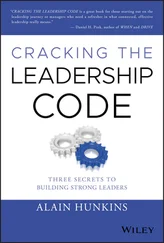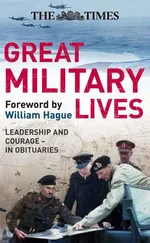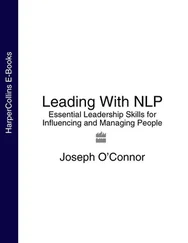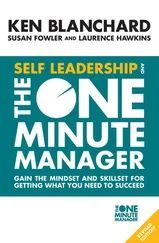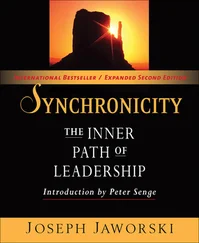Contents
Imprint
All rights of distribution, also by film, radio, television, photomechanical reproduction, sound carrier, electronic media and reprint in extracts, are reserved by the publisher.
The author is responsible for the content and correction.
© 2020 united p. c. publisher
ISBN Printed Edition: 978-3-7103-3711-6
ISBN e-book: 978-3-7103-4544-9
Cover image: www.pixabay.com
Jacket design, page design and typesetting: united p. c. publisher
www.united-pc.eu
Dedication

The thought to write was first hatched at the end of a sponsored Haggai Institute Leadership seminar in Maui (Hawaii), which turned out to be as much an intellectual retreat as it represented another defining moment in my life. Such was the motivation to write that I made a commitment to do so within five years. As it turned out, apart from the many lectures and speeches I have done from time to time which have now become part of my library collection, the first time I sat down to start any writing was nearly seven years after that initial ‘resolve’. I owe a load of gratitude to my sponsors to the Haggai seminar who I cannot name, the faculty, and my HI 329 course mates at Haggai Institute who voted me the class valedictorian. I have also been encouraged along the journey of life by many different people – some by their direct positive encouragement and the insights we shared, others by their actions which tremendously enhanced my understanding of the hazards of leadership.

Dare to dream but do not dream unless you are willing to live your dreams - Bunmi Oni, ca. 2004
1
The Challenge of Leadership

Leadership studies are as old as man; conventional wisdom still reflects the depth and multiplicity of dimensions of its impact; and there is hardly consensus on one definition of this phenomenon. Dwight D. Eisenhower said, “Leadership is the art of getting someone else to do something you want done because he wants to do it.” Many have raised questions on whether there is a science to leadership and the answer unquestionably is yes; but it is both science and art. Both knowledge and wisdom are essential components of effectiveness. The truth, however, is that people cannot be managed like inventory, they must be led; and in this lies the assertion that leadership is a lifetime development process. There is hardly a final perfect destination on this side of eternity. It’s like the myth of 20/20 vision. As optometrists tell us, a child can have 20/20 vision and still have a vision problem. A 20/20 vision describes normal visual acuity (the clarity or sharpness of vision) measured at a distance of twenty feet. A child with 20/20 vision can see objects at twenty feet, but not necessarily clearly and comfortably at other distances. Therefore, 20/20 vision does not mean perfect vision. Other important vision skills - such as peripheral awareness or side vision, eye coordination, depth perception, focusing ability, and colour vision - contribute to a child’s overall vision ability. This is what makes optical illusion possible, even for people with otherwise perfect vision. The point is that the most effective and influential leaders have their struggles, but what sets them apart is that they can often resolve their own inner conflict.

At designated times in a theatre production, the curtains are drawn, the lights go out and there is pitch darkness for a short while. When the lights come on again, its a new scene; the old has passed, the new has come.

American football is not much played outside North America and a few other countries, but the passion it evokes among the fans is no less strong than soccer generates in countries where this is the national sport. The fanfare and verve in the stand during a match is eclectic and the energy level does not diminish through the game — well, except for a discouraged losing side. I first came into relatively close contact with American football during a course at the University of Michigan in 1990, and became a fan of the U of M team in college football. Having grown up with soccer as a national sport, it was hard to think that this high contact game could be so consuming. The first reality that a newcomer to football cannot miss, once you get to understand it, is the extent to which it is really about strategy and execution. The communication between the coach and the quarterback allows a precise and up-to-date revision of the strategy if the original play did not appear effective, or if the game plan of the opposition was impacting the agreed play. One of the most potent tools of a football coach, and quite unlike soccer, is the facility to call a time-out — quite apart from the short break between quarters — when he needs to redirect the play or implement a whole new plan. Usually the team returns to the field after a time-out with a completely different blueprint from the one they left the field with. The opposing team understands too that they would need to read the new game plan on the other side and respond accordingly. The coach calling a time-out wants to ensure the new game cannot be easily deciphered in order to assure the objective of advancing the ball into the opposing territory for an eventual touch down and to widen the score line. The facility of a time-out is not limitless in a football game, as only three discretionary time-outs are allowed in each half, and coaches call time-out only when strictly necessary, completely at his discretion. It’s not a democratic process where team members vote, nor is there room for an opinion poll. The clock stops when a time-out is called, and this is only part of the reasons that a match that should normally be sixty minutes divided into four quarters of fifteen minutes each, sometimes goes on for three or four hours. The clock stops whenever play is interrupted, either by an incomplete pass or when play goes out-of-bounds. Beside the time-out allowed for teams, the officials can call time-outs to administer a penalty, attend to an injured player, or for the commissioners to review and decide on a particular move on their high-resolution, closed- circuit monitors. Time-outs allow specialisation in a way that no other sport does. Only eleven players are allowed on the field at one time, but those eleven can change frequently, depending on the coach’s strategy, the challenges a team faces, or the conditions of play. Officials call for media time-outs after a change of possession. This can be for turnover by interception, fumble or on downs, following a successful point(s) after touchdown (referred to in football as PAT) or a field goal try, or, in the National Football League, after a kickoff when the opposing team scored, usually when there is more than five minutes to play in each quarter. If an instant replay challenge is called during the game, the referees also signal for a media time-out. The referee signals these media time-outs by first using the time-out signal, then extending both arms in a horizontal position.
Конец ознакомительного фрагмента.
Читать дальше








